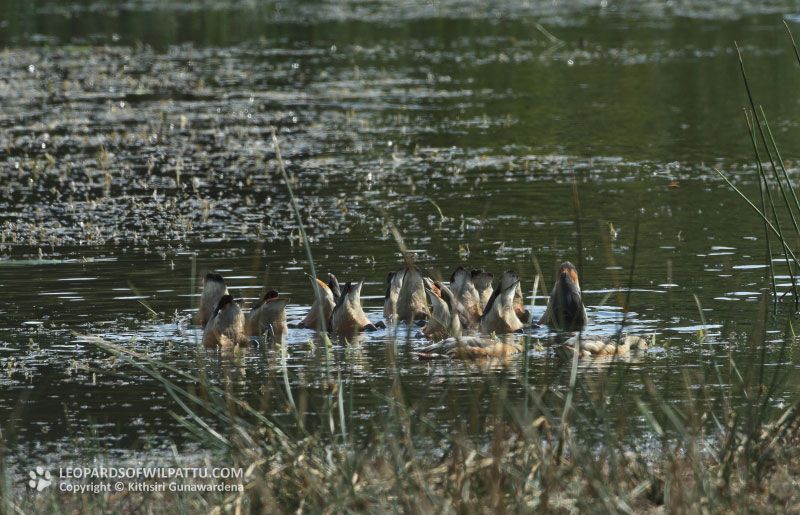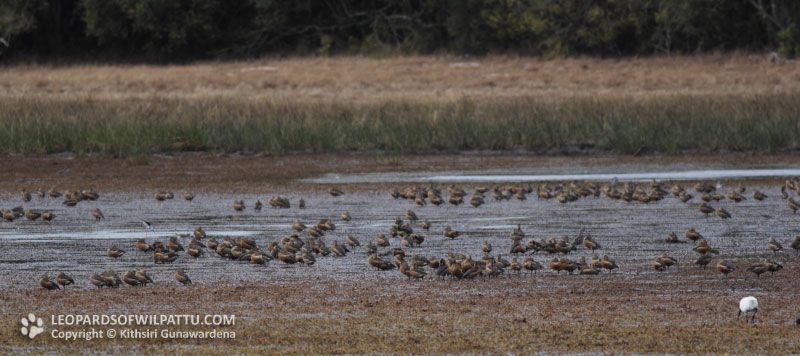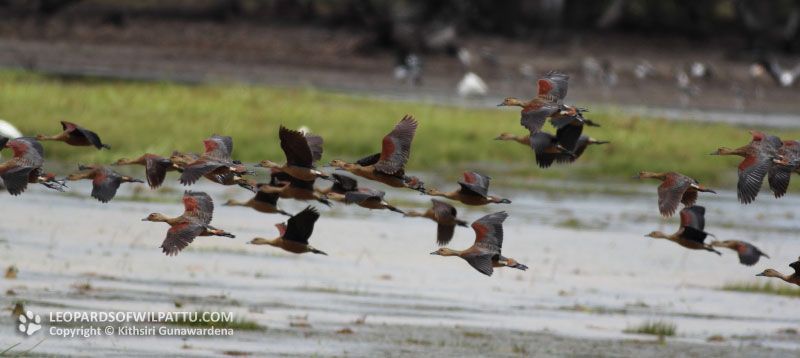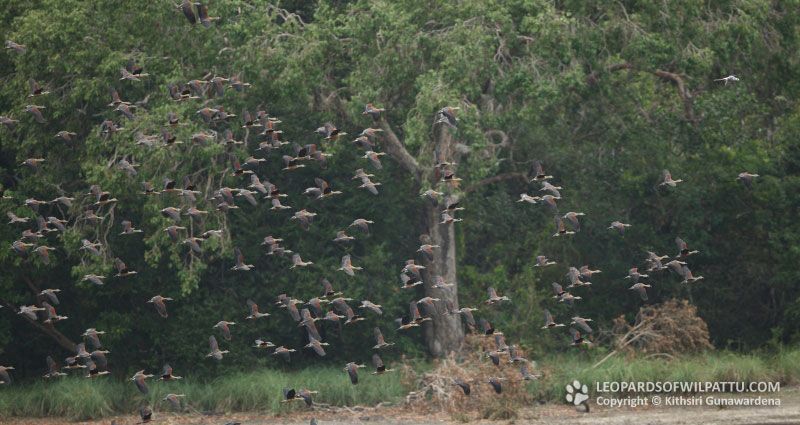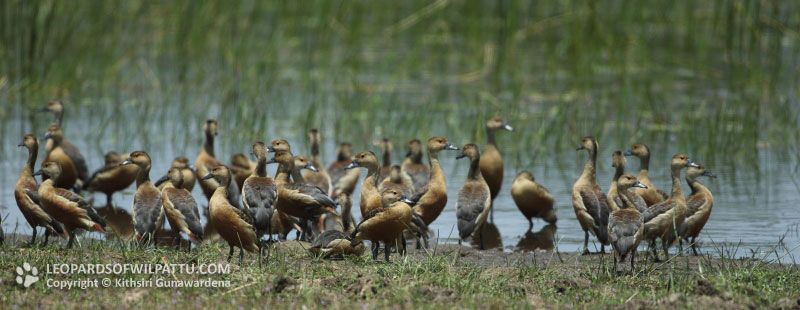
Birds ‹‹ Go Back
This is a breeding resident found through out the lowland fresh water bodies and wetlands of the country. Other than in Sri Lanka this species is found in India, Nepal, Malaysia, Singapore, Indonesia, Myanmar, Thailand, Andaman Islands, Nicobar and Maldives Islands and Vietnam. The conservation status of the species under reference is regarded as Least Concerned (National Red List 2012). The Lesser Whistling Tealis a species protected under the Fauna and Flora Protection Ordinance as amended by Act No. 22 of 2009.
This is one of the comments water bird species in the country. The highest altitude at which I have seen this species is at Sigiriya at an altitude of 309 meters. It is not found in the hills. I have observed this species in all our dry zone national parks as well as in the Jaffna Peninsula, Delft Island, Mannar Island, Trincomalee, Batticaloa, Potuwil, the water bodies in the north-central province, Galle, Matara, Tangall, Anawilundawa, Nawadankulama, Puttalam, throughout the western province, wetlands in and around Colombo such as Thalangama, Kotte and Attidiya. These birds are generally seen resting at the edge of the water or swimming among the water plants and are known to be nocturnal feeders. Among other things they are also known to feed on paddy. Their pleasant whistling call is made when the birds are in flight.
In Wilpattu this is a common bird that is found all year round in most fresh water bodies such as Maradanmaduwa Tank, Borupan Wila, Nelum Wila, Thimbiri Wila, Tala Wila, Panikkar Villu and Alam Villu. Usually these birds are observed in flocks of 10-15 birds during most of the year. In September 2012, where the drought was quite severe where many water bodies inside the park was reduced to small puddles, I observed large numbers of these birds at Panikkar Villu and at Borupan Wila. On 2nd and 16th of September 2012 during the park rounds I counted 1300 and 1552 of this species respectively. Even though these birds are usually known to be nocturnal feeders in August 2013, while observing a leopard, I observed and photographed a small flock of these birds up ending at Borupn Wila. I was not able to find out as to what they were feeding on but they fed for almost an hour. During the dry season Maradanmaduwa Tank is good place to photograph these birds in flight.

